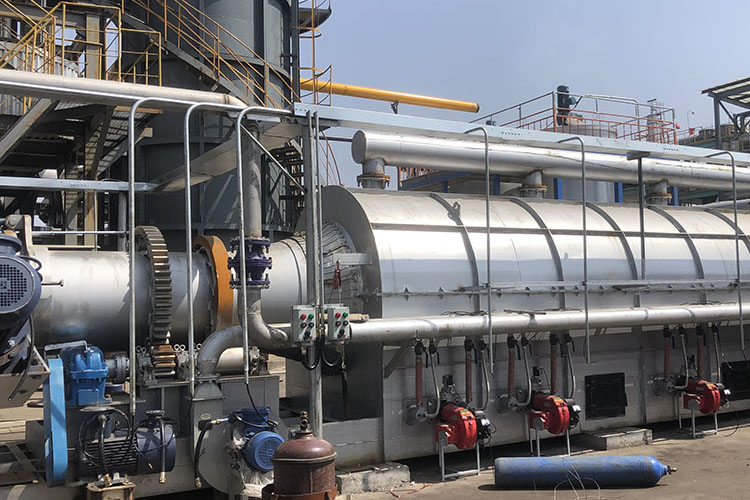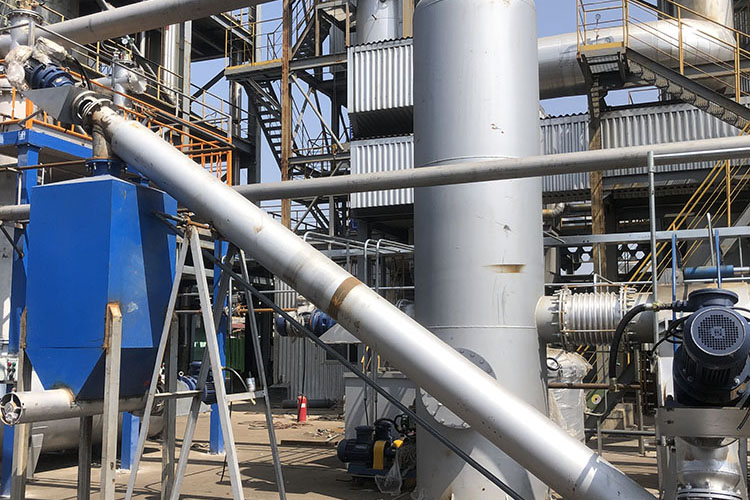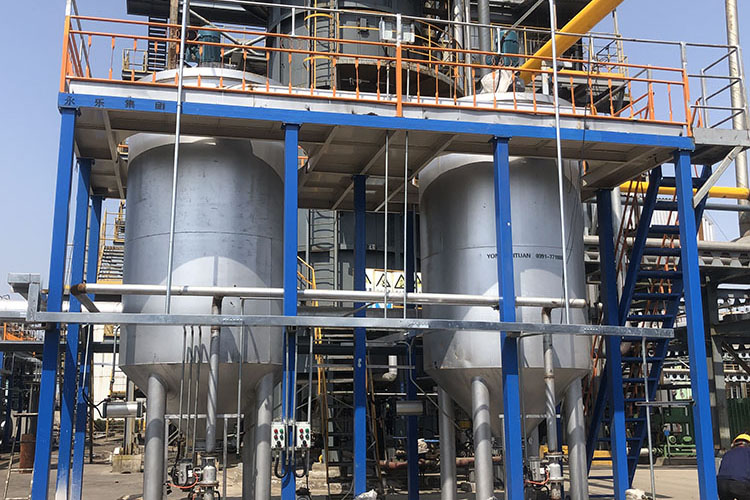Oil sludge pyrolysis equipment is a method of extracting usable energy and reducing waste volume from waste containing oil (such as oily mud generated during oil extraction, oilfield waste, etc.) through high-temperature pyrolysis treatment. The oil sludge pyrolysis equipment is the key equipment to achieve this process. This article will provide a detailed introduction to the working principle, main components, and importance of oil sludge pyrolysis equipment in environmental protection and energy utilization.

Oil sludge pyrolysis is a thermochemical process that heats oily sludge at high temperatures to decompose it into products such as oil and gas, carbon black, and combustible gases in anaerobic or anaerobic environments. Oil sludge undergoes pyrolysis reaction at high temperatures (usually between 400 ° C and 700 ° C), decomposing into small molecule compounds. These small molecule compounds continue to decompose under high temperature conditions, generating oil and gas (liquid hydrocarbons), combustible gases (such as methane, hydrogen, carbon monoxide), and solid residues (mainly carbon black and inorganic substances). The generated oil and gas are cooled by a condensation system and condensed into liquid oil for recovery. Liquid oil can be further processed to extract products such as diesel and gasoline. After purification, combustible gases can be used as fuel supply equipment or for power generation and other purposes. Carbon black in solid residues can be used as industrial carbon materials or further processed into carbon products.
Oil sludge pyrolysis equipment usually consists of a feed system, pyrolysis system, heating system, condensation system, gas purification system, carbon black collection system, etc.
Feed system: used to transport oily mud to the pyrolysis reactor. The feeding system needs to have the function of preventing impurities in the mud from blocking the equipment, usually including conveyor belts, screw conveyors, etc.
Pyrolysis system: This is the core part of the oil sludge pyrolysis equipment. Reactors typically use rotary kilns, fluidized beds, or fixed beds to provide the required high-temperature environment through heating systems. The reactor needs to have good sealing to ensure that the pyrolysis reaction takes place in an anaerobic or anaerobic environment.
Heating system: provides a high-temperature heat source for the reactor. The heating system can use methods such as electric heating, gas heating, or fuel heating, depending on the economy and equipment design.
Condensing system: used for cooling and recovering oil and gas. A condensation system typically includes equipment such as a condenser and oil-water separator, which condenses oil and gas into liquid oil through a cooling medium (such as water or cooling oil).
Gas purification system: used to treat the generated combustible gas, remove impurities and harmful components, and make it meet the requirements of use. The gas purification system may include equipment such as dust collectors, washing towers, adsorption towers, etc.
Carbon black collection system: used to collect and process carbon black generated during pyrolysis. Carbon black can be collected using equipment such as bag filters and further processed or utilized.
The environmental protection and energy utilization value of oil sludge pyrolysis equipment

Oil sludge pyrolysis equipment is of great significance in environmental protection and energy utilization. Can effectively reduce the volume of waste: Through pyrolysis treatment, the volume of oily mud is greatly reduced, reducing the difficulty of waste treatment and stacking. Reducing environmental pollution, during the pyrolysis process of oil sludge, oil and combustible gases are recycled and reused, reducing the pollution risk of direct discharge of oil sludge on soil and water bodies. At the same time, the sealing design of the pyrolysis reactor and the use of the gas purification system ensure the effective treatment of harmful gases and reduce atmospheric pollution. The oil and gas generated during the pyrolysis process can be refined into fuel, which can be reused as secondary energy and has significant economic value. Carbon black and combustible gases can also be used as industrial raw materials or energy sources. The generated combustible gas can be used for the heating system of the pyrolysis equipment itself, achieving partial energy self-sufficiency and reducing operating costs.

Oil sludge pyrolysis equipment converts oily sludge into usable oil and gas, carbon black, and combustible gases through high-temperature pyrolysis, which not only reduces the volume of waste and environmental pollution, but also effectively recovers energy resources. With the continuous improvement of environmental protection requirements and the increasing scarcity of energy resources, oil sludge pyrolysis technology and equipment will play an increasingly important role in waste treatment and resource reuse. The design and operation of oil sludge pyrolysis equipment need to consider multiple factors, including raw material characteristics, reaction conditions, equipment selection, and operation management. In the future, with the continuous progress of technology and the accumulation of application experience, oil sludge pyrolysis equipment will become more efficient and environmentally friendly, making greater contributions to achieving sustainable development.
Yongle Environmental Protection is mainly engaged in the research and development, production and sales of complete sets of technical equipment for organic solid waste disposal and comprehensive utilization. Production and manufacturing, domestic waste treatment equipment, tire pyrolysis equipment, medical waste disposal equipment, hazardous waste disposal equipment, and achieve efficient and comprehensive utilization of resources through independently developed low-temperature anaerobic pyrolysis equipment technology solutions.
Tags:Working principle of oil sludge pyrolysis equipment,oil sludge pyrolysis,sludge pyrolysis equipment,Yongle Group,Working principle of oil sludge pyrolysis equipment,Yongle Group
 Latest news
Latest news


























